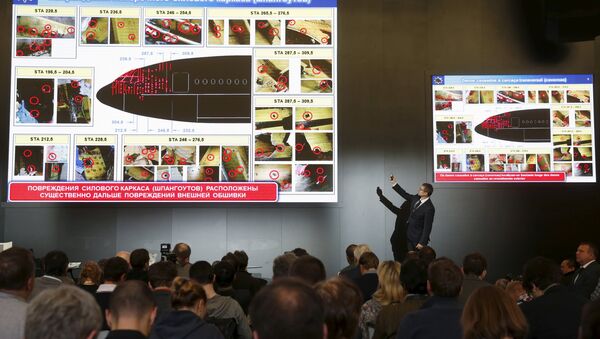The report claims that the Malaysian airliner crashed after being struck by a 9N314M-model warhead carried on a 9M38-series surface-to-air Buk missile, which was launched from anywhere within a 123-square-mile area in eastern Ukraine.
"The electronic detonator in this type of missile works differently from what the Dutch assumed," the civil aviation authority’s deputy chief Oleg Storchevoy said in a televised interview.
Flight MH17, en route from Amsterdam to Kuala Lumpur, was brought down on July 17, 2014 over the Donetsk countryside, killing all 298 people on board.
Russian air defense systems producer Almaz-Antey presented the findings of its own inquiry into the tragedy, stating that the missile that downed the plane could only have been a old model of its 9M38 series of missiles that was withdrawn from Russian army service in 2011.




